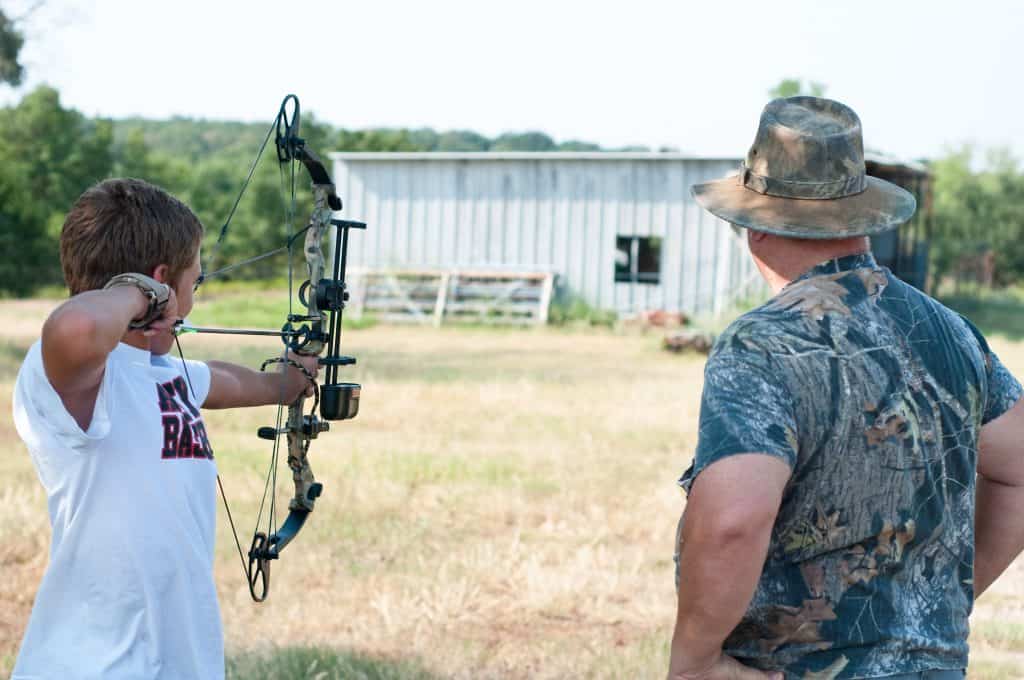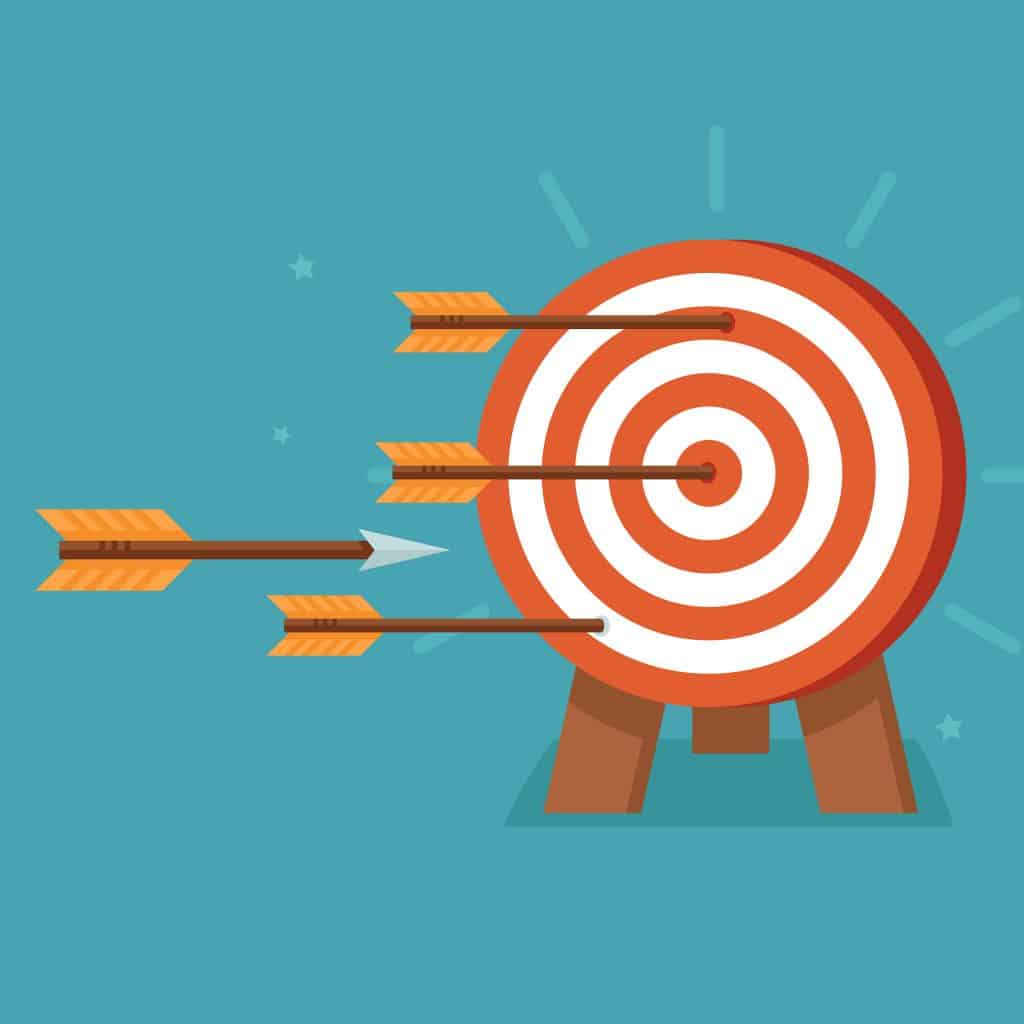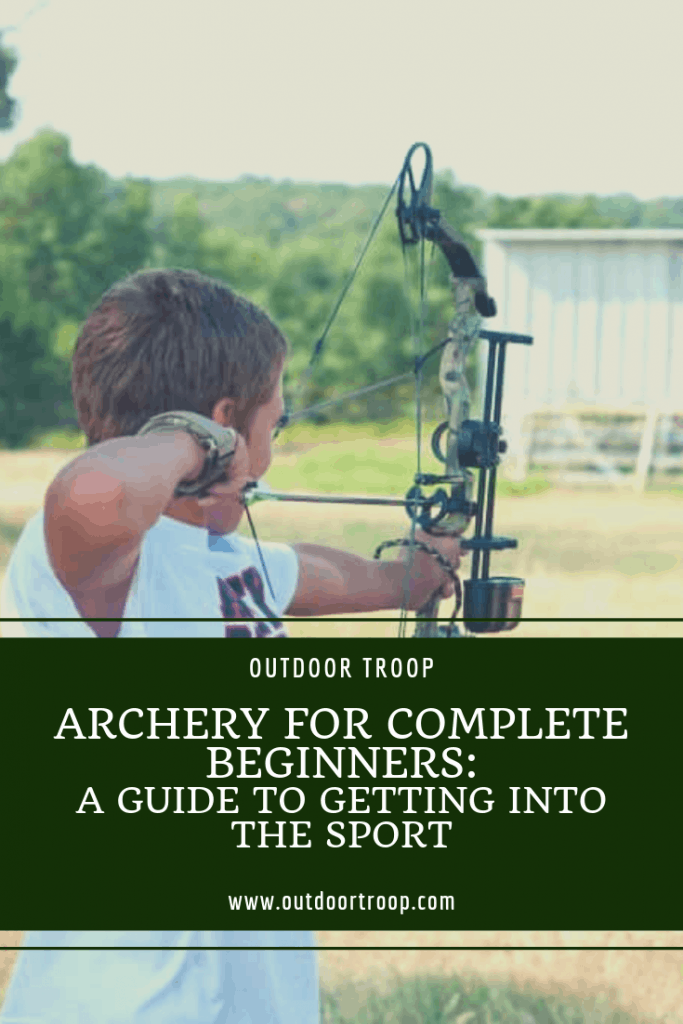
You’ve always wanted to feel what it’s like to hold a bow in your hand and feel the satisfaction of letting the arrow fly right into the target.
You might’ve just finished watching some awesome movie where the main character was some awesome archer. Or maybe you want to try bowhunting for a change!
Whatever your reason or motivation for trying out archery is, there is always something available for every type of archer and person! Regardless of your age, gender, or experience with the sport of archery itself, archery has so much to offer!
But since there is so much available for the aspiring archer, it can sometimes be somewhat difficult to understand how to even get started, or where to even get started, which is why I wrote this article to help clear up the confusion that you might be experiencing.
We’ll include in this article what type of equipment you need to get in order to get started, how to find a proper archery range or club, and a couple of tips on proper form and shooting to help you begin your journey into the world of archery!
The Proper Equipment
The Bow Part 1 (Different Types of Bows)
If you are looking to enter the world of archery, and are even looking to purchase your own equipment, you probably know that one of the most important parts of archery is the bow.
There is surprisingly much more to a bow than you would perhaps think, and there are many different types of bows, with different types of mechanisms and things to think about before purchase or using a bow.
So while there are many different types of bows, to keep it simple, we’ll just talk about the most commonly used two types of bows. The compound and the recurve bow.
The recurve bow is probably what you think of when the image of archery comes to mind. It’s a slightly more modern version of the most traditional bow, but it is also more or less included in the traditional archery category.
The recurve bow is very simple, with just the body of the bow, the bowstring, and a rest for the arrows. The recurve bow can be really good for learning proper form, as it can be a little more challenging to hold properly, but it’s highly recommended for beginners to try out!
The compound bow is much more complicated than the recurve bow, with a system of pulleys that makes the drawing of the bow a little more simple, as it requires less power to draw and to make a shot accurate from further distances.
Because of the pulley system, the compound bow looks a little more modern than a recurve bow, which may be a motivation for purchase. The compound bow is also frequently used in bowhunting, so if you’re interested in that, then this bow might be worth a shot.
The Bow Part 2 (Choosing Correct Size and Draw Length)
Whether you are looking to purchase a bow of your own, or simply rent one to use, it’s always good to ask a professional for help. Archery stores will often have technicians or professionals that have the proper knowledge to help you choose the correct bow for the ultimate experience.
So while you are searching for your ultimate bow, ask the people at the archery shop you are considering buying a bow at if they have can check your draw length for you.
Many places will use an Easton Draw Length Indicator, which is kind of like an arrow with marks on it that will show what your draw length is.
They’ll have you put the Indicator into your bow, and draw it back as far as you feel comfortable, then they are able to measure what your correct draw length is, which will then be an indicator for what size of bow you need.
Using this guide, courtesy of Archery 360, you can see based on your draw length what size bow is appropriate for you.
| Draw Length | Bow Size |
| 24″ | 62″ |
| 24″-26″ | 64″ |
| 26″-27″ | 66″ |
| 27″-29″ | 68″ |
| 29″+ | 70″ |
The Arrows and Other Accessories

Next, you will need to decide what kind of arrows you would like to shoot with, as well as if you would like to pick up some extra accessories along the way.
First off, we’ll start with the arrows. You will need to consider several factors for choosing your arrows, like weight, length, the materials of the arrow, etc.! I’ll briefly discuss them, but it would be greatly beneficial to ask the pro at your archery shop to help you get set up with the right arrows.
A way that many people determine the proper length of arrows is by measuring the arrow from the archer’s chest, all the way to the end of their arms outstretched, and if the arrow is a couple of inches longer than the archer’s arms, then that is about the appropriate size.
In addition to length, there are a few different types of materials that arrows are generally made of. They include:
- Aluminum
- Wood
- Carbon
- Aluminum/Carbon mixes
While the type of arrows that you are shooting depends on the length of the bow as well as what kind of bow you are using, it is great to ask your local archery pro shop to guide you to the right type of bow.
Other accessories that are important but not necessarily required include things like the arrow’s quiver, an armguard, and a finger tab.
A quiver is useful for keeping your arrows all in one place and can save the headache of carrying your loose arrows around.
Armguards and finger tabs are especially important for keeping your fingers and arms protected from the impact of the bowstring.
Since you have the bowstring so close to your arm, sometimes if you’re practicing or shooting for long periods of time, your arm can start to become sore or sting from the “buzz” of the bowstring. Sometimes it can even get bruised if you’re shooting for such a long time.
Similarly, the finger tab helps keep your fingers from getting pinched or raw while you are continually drawing the bowstring back and letting it go.
There are plenty other accessories and additions for your archery equipment, like sights, bow cases, rests, etc., if you feel so inclined to pick these up along the way, then you can talk to your local archery pro to see what will fit your archery needs best.
How to Choose a Range or Club
Different Types of Archery
So you’ve purchased your equipment and you’re feeling geared up and ready to go. But now you need to have a place to shoot and someone to teach you!
When choosing what type of archery range or club you want to go to, often times the type of bow you’re shooting and the type of archery you are interested in trying can be a determining factor for where you go.
Frequently compound bows and recurve bows have different ranges because of their different speeds and capacities, so it’s always important to be aware of the types of courses offered at your desired archery range.
There are several different types of archery that are most commonly offered at archery ranges. They include:
- Target shooting
- Field archery
- Bowhunting
- 3D Archery
Target shooting is probably the most popular form of archery, especially for beginners. This type of archery includes a standard target and can be for both compound and recurve bows. It can be an inside target or an outside target.
Field archery is very similar to target shooting, only that is it only outside and sometimes placed on a course of some sorts, like on a trail or more challenging terrain, with courses placed all throughout it.
Bowhunting is basically just hunting with a bow and arrow instead of a gun and is sometimes a sport all of its own. A way to practice bowhunting is to try 3D archery as well, which is several 3D targets, often in the shape of animals, that you can practice on.
3D archery varies as in there can be outdoor as well as indoor courses. Some of the targets can be traditional hunting targets, while some can get as interesting as dinosaurs, fish, etc.
Range vs. Club
The main difference between a range and a club is the level of exclusivity it has.
Clubs generally have to be signed up for with a certain fee attached and can be more of a community for archery die-hards, with seminars, group meetings, group activities, tournaments, etc.
Although sometimes clubs offer time that the range is open to the general public, where they can have shooting time and/or with lessons from the members, clubs are a lot more of a commitment than a normal range is.
Ranges are often geared towards beginners or those who are just wanting to practice and improve their skills. You can often rent equipment at ranges and often along with a rental fee there is an entry fee.
Many times there are also archery pro shops located near or in the range area, so if you are looking to buy equipment as well as get assistance in shooting, then going to ranges with a pro shop attached might be a good thing to do.

What to Expect in an Archery Class
Depending on what type of class you are joining, either way, it’s important to call ahead of time and make sure that you are aware of the times that the range offers lessons or free time to shoot, or whether you are interested in a group class or a private lesson.
Make sure that you are wearing comfortable, loose clothes that are easy to move around in. Once you get more comfortable shooting and with the sport, then you may adjust your wardrobe to whatever feels best.
When you go into the range, it might be wise to have the instructor first teach you how to string and take care of your bow, so as to prevent early wear and tear.
At the beginning of the class, the instructor will go over safety instructions and what to be aware of while you’re shooting. For example, never go to pull your arrows out of your target until all archers have ceased shooting.
Your instructor will probably also go through the anatomy of the bow and the arrows, then go through the steps of the shot step-by-step so that you understand how to shoot. Don’t be afraid to ask questions, because that’s why the teacher is there!
Beginner Tips (And Proper Form!)
If you end up taking a class, it’s most likely that you’ll get all the information you need from your instructor, however, it can be a little nerve-wracking at times, especially if you are a complete beginner.
So if you want to look like you’re not so much of a beginner as you actually are, you may want to try some of these tips that will help you have better form and maybe have a more enjoyable experience!
Don’t Be Afraid of the String
This is something that can be kind of a struggle when you’re first starting out on your archery journey. You will probably be scared of the bowstring coming back and slapping you in the face after firing your arrow.
But surprisingly, if you’re holding the bow properly, the bowstring should not come back and slap you in the face!
The string is too tense to have enough flexibility to come back and hit you. It’s not an elastic band.
In fact, if you look at Olympic archers or professional archers, you will see them actually press the bowstring to their face, sometimes even to their nose and lips.
You’re actually supposed to bring the string close to your face, which is called the anchor point for the draw of the bowstring.
Don’t worry! The string is your friend! It will not hurt you!
Aim Lower!
Sometimes when just starting out, it’s easy to feel pressure to be perfect and hit the gold center of the target every time! Well, there’s no need to feel that way, since you’re just beginning!
When aiming your arrow, a good trick that actually helps you get closer to the center of the target is to aim lower than the actual target!
This is a common beginner’s mistake, and often instructors will have to correct them on aiming too high at the target.
If you aim below the target, then the chances of you hitting the center of the target are much more likely, so aim lower!
Don’t Clench Your Arrow
Another common beginner’s mistake is sometimes called, “showing knuckles.”
When you are holding the bowstring, you generally are supposed to pull it back with your three middle fingers, with on some occasion your thumb as well.
However, sometimes if you are clenching your bow, that can cause your arrow to fall off the rest and therefore render it impossible to shoot. When you are clenching often times your knuckles become visible, which is why this is called “showing knuckles.”
So don’t forget to hold the bowstring firmly but loosely at the same time, with those three fingers!
Be Relaxed and Have Fun!
When you’re a complete beginner at something, it’s fairly normal to feel self-conscious and kind of awkward, I mean, you’ve just started, right?
Interestingly though, the more focus you put into your shot, the more likely you are to make a poor shot.
If you are relaxed and have proper form, a nice, relaxed shot is more likely to be more accurate and close to the center of the target!
If you need help with your form or shooting style, don’t be afraid to ask more experienced archers around you or your instructor for help or a demonstration on how to do it right!
And remember, while archery is a sport, the point of it is to have fun! Don’t forget to enjoy your experience while you are getting better at archery and honing your skills!
And if you are feeling discouraged in the beginning, it’s totally fine! Everyone, yes, even the Olympic archers, were beginning archers at some point. Don’t let your lack of experience discourage you from getting better!
Archery is not impossible! You can do it!
Have lots of fun, and don’t forget to enjoy the journey!
Happy shooting!

